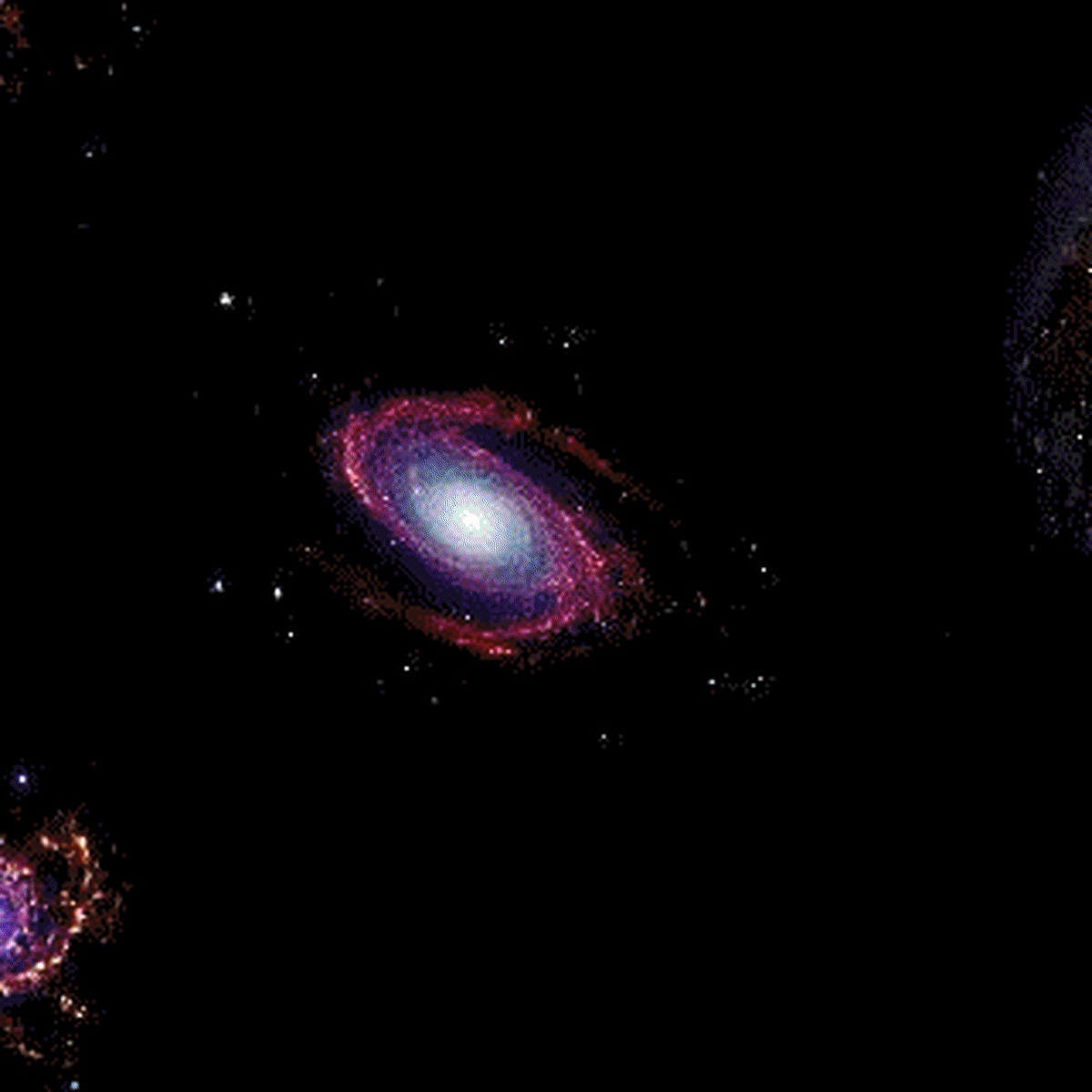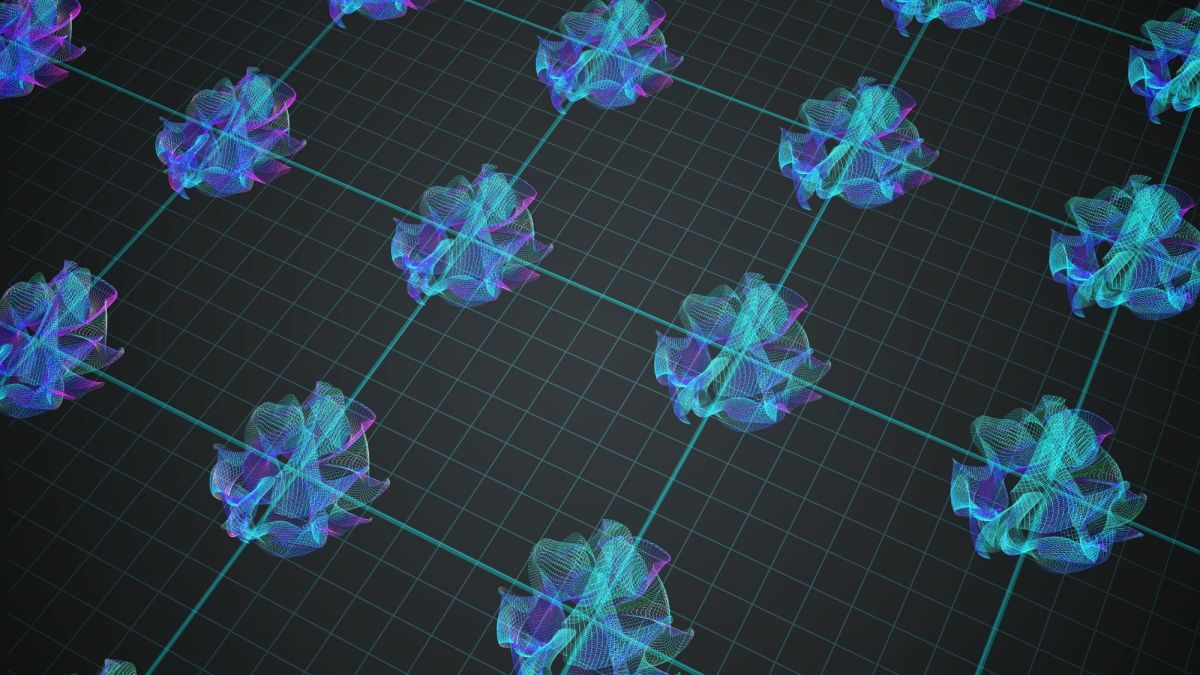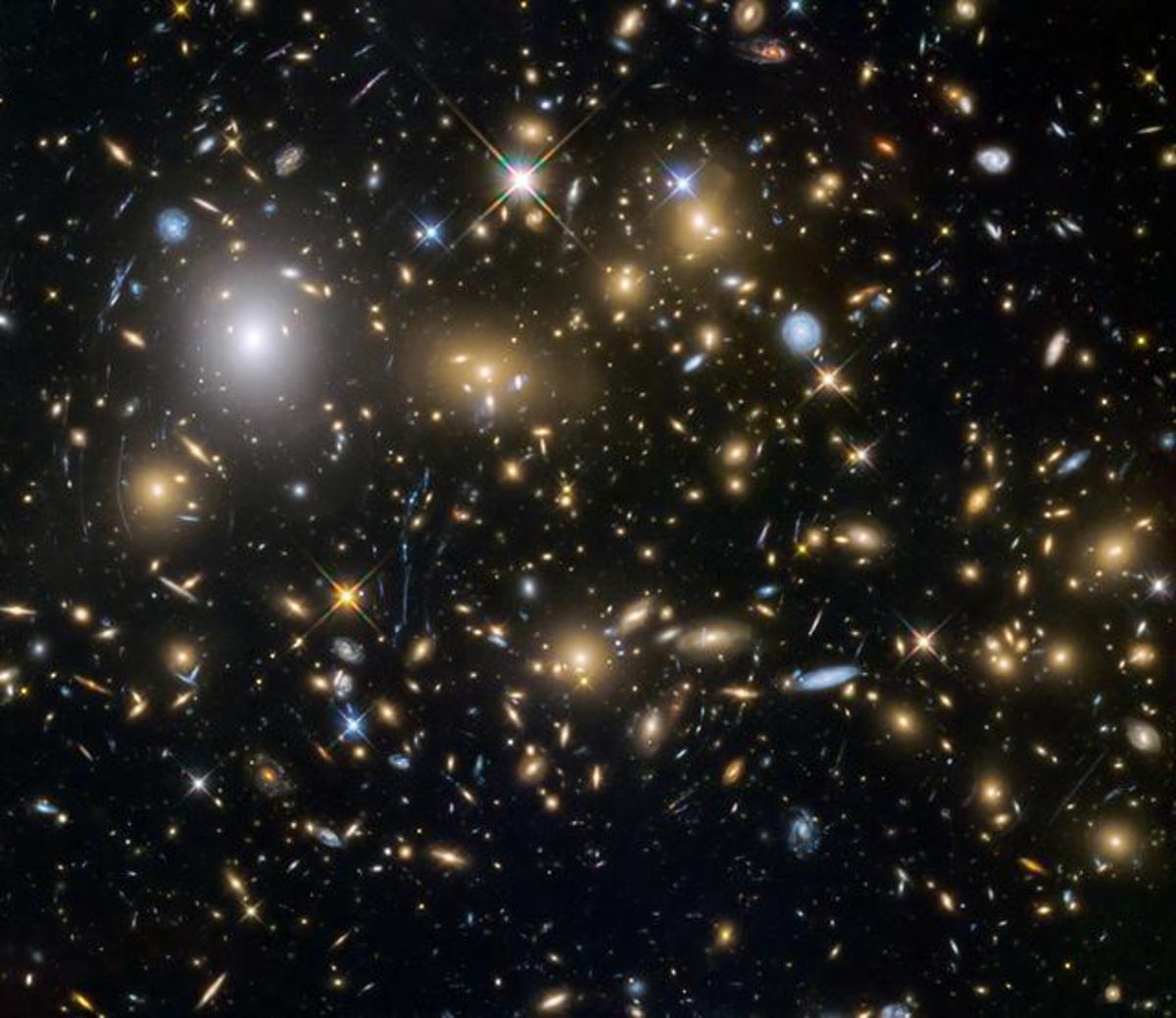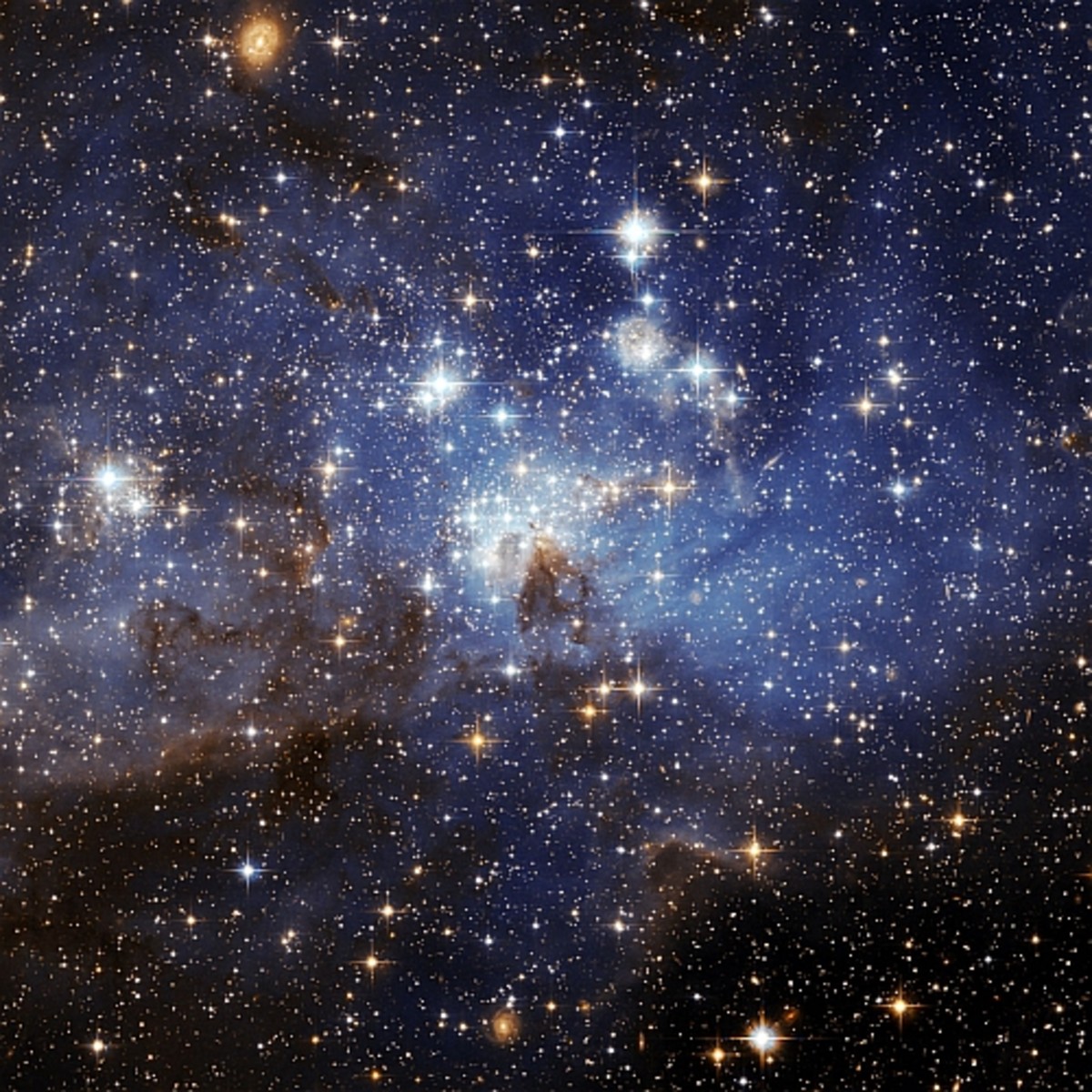Modern Research on the Speed at Which the Universe Expands
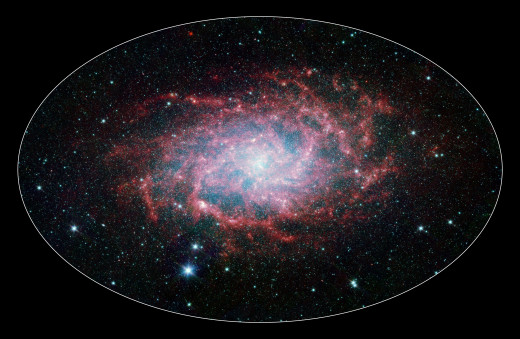
According to the principles of modern physics, our universe must be "all-encompassing", because after the great explosion of the Big Bang fourteen billion years ago, it must be smooth and uniform in all its dimensions according to the measurements of the light year. That is the scale in which light travels at a speed of one hundred and eighty-six thousand years per second in a year, because the universe has been constantly expanding in all directions since this explosion. Therefore, it is hoped that it will spread evenly throughout. And if you look at the glow of the sky after the explosion in the microwave background, it looks uniform and smooth everywhere in the sky.
This seems to be in accordance with the scientific principle. But when X-ray surveys looked at clusters of distant galaxies, they looked farther than expected, and at some point they were closer than estimated, indicating that the speed of expansion of the universe was higher at some point. It was fast and somewhere very fast.
Evidence of this possible non-existence of the universe was obtained by an international team led by University of Bonn astronomer Constantine McCas, based on data from 850 galaxies from Jonassa's Chandra X-ray Observatory and the European XMM Newton Satellite. Also obtained by Japan's Advanced Satellite for Cosmology and Astrophysics. In this study, clusters of galaxies are thought of as a lighthouse, and the distances between them are estimated by the brightness and lack of light. Has gone and the amount of gas and X-rays coming out of a cluster can tell their temperature.
In this way, by measuring the brightness of the X-rays of the cluster, scientists were able to determine its distance. By comparing the value of luminosity, Makas and his colleagues were able to detect differences in the speed at which the universe expands in different places throughout the sky. So the two clusters that were 30% brighter or dimmer were either too close or too far apart.
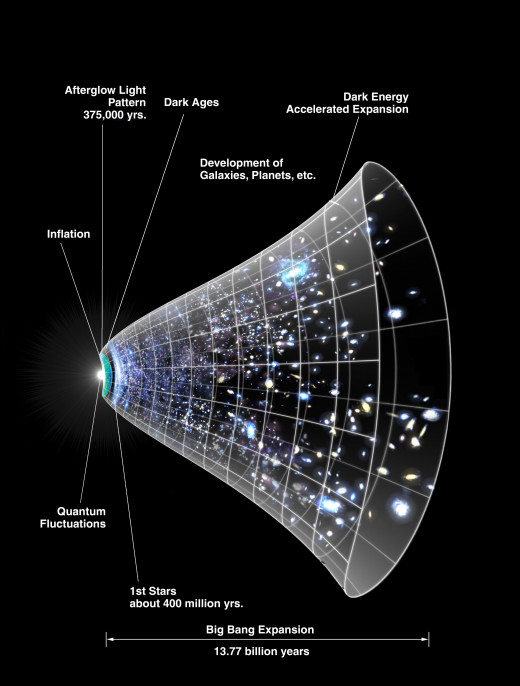
According to experts, we were able to identify a point whose speed of expansion was much slower than that of the rest of the universe, and a place was discovered where the speed of expansion of the universe seemed to be extremely fast. Other similar studies of optical supernovae and infrared galaxies, according to McCas, showed similar inequalities at the same locations. While some other similar studies do not reveal any discrepancies.
So far we have not discussed the reasons for this. The fact is that the unevenness of the universe will shake the pillars of physics, which will require a change in our current thinking about the evolution of the universe. Michigan State According to university astronomer Megan Donna, if in fact the expansion of the universe is different in different directions, then the proposed theory of cosmology that the spread was uniform in a very large area of the universe, disproves the notion.
An uneven universe would be astonishingly depressing, because it would show that our understanding of the structure and evolution of the universe is, in fact, largely incomplete. To acknowledge this, we need a completely smooth cubic meter. (Volume), for which the cosmologists have to turn to dark energy. This accelerates the expansion of the mysterious universe. Perhaps sometime between the expansions of the universe, the image of the early universe in cubic meters, and the addition of the effects of dark energy over the past few billions of years to the image of the subsequent universe, has created an uneven universe.
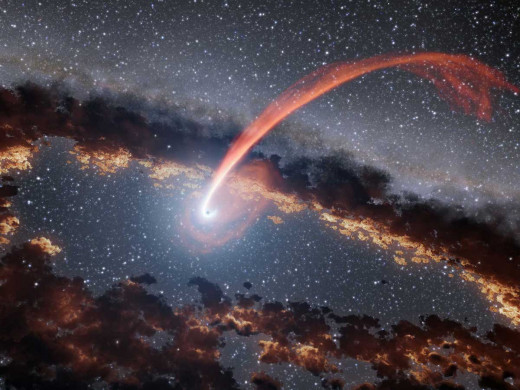
Thomas Repres, of the University of Bonn, says that if different forces of dark energy were to be discovered in different parts of the universe, many other explanations would have to be put forward to refute it, so that a plausible case would appear. Alternatively, it is also possible that the universe is not at all uneven, because blurred images of galaxies cluster gravitate away from their original position and appear in clusters of galaxies far, far away from their original position. Boats like this flow fast between the fast flowing rivers. But the vast majority of cosmologists do not expect a large flow in a large scale in a large part of the sky, which is equivalent to five years of measurement. According to Johns Hopkins University astronomer Adam Race, the results of galaxy cluster studies are not acceptable. Different researchers have used different techniques to measure and the results show that the X-ray temperature and brightness of the galaxy clusters are not as clear as they should be.
In addition, experts say, gas and dust in our own galaxy (the Milky Way) make the landscape of the universe dim and obscure. That is the boundary of the Milky Way, where the gases and dust that absorb the galaxy's X-rays are the thickest. Race says he is talking about the strange side of the universe. That's right- this is our blind spot, which makes it suspicious. Different results show, because we have many other side tests that are very accurate and that appear in studies of cubic meters and very large measurement structures. These reviews are simple and straightforward and have been implemented in many ways
According to experts, in this new survey, we have been told that in such a large scale, we will create so many fluctuations in the cubic meter that it will be a thousand times brighter than what astronomers will study.
More evidence is needed for the final decision of the uneven universe to emerge as a result of larger measurements and extensive investigations. Now they want to further their research by studying the Nifra Red, a survey of the rough universe based on the X-rays of their galaxy clusters. The final results will be obtained with new space telescopes. These include the joint German-Russian Rosetta X-ray Observatory and the European Space Agency's Euclid mission. Both of them will go deeper and deeper and survey the clusters scattered all over the sky which will be decisive.
© 2020 Ahtesham Soomro




